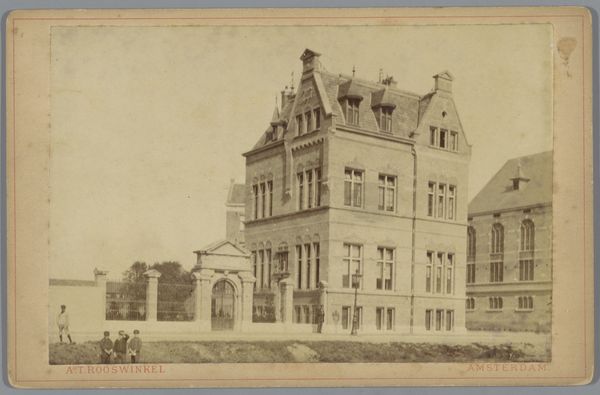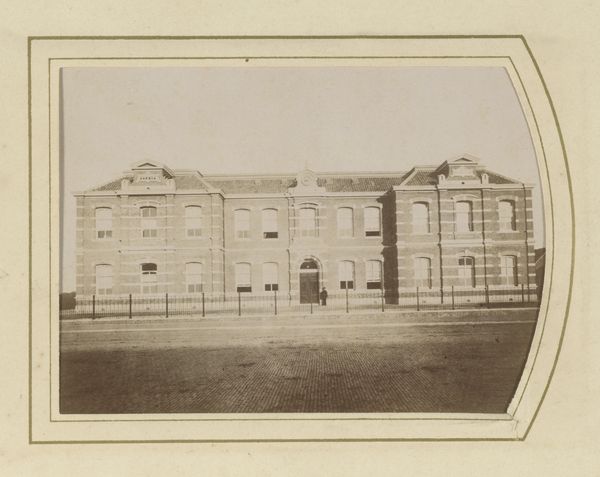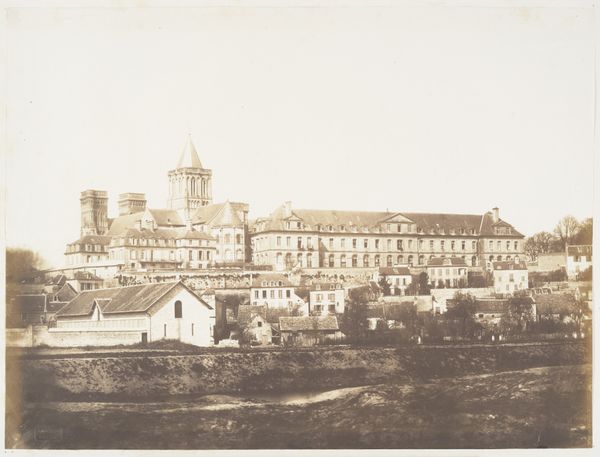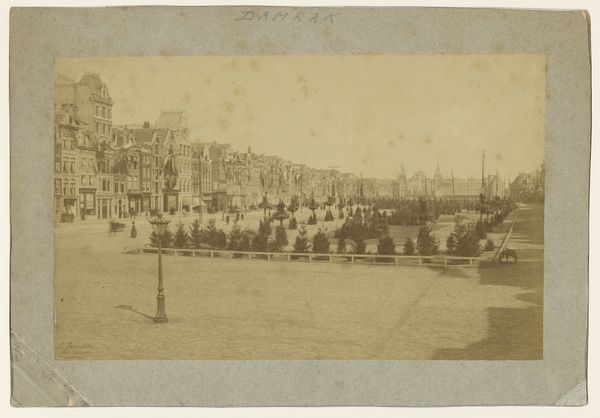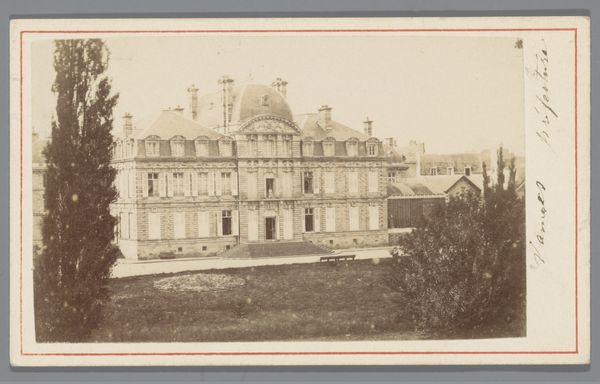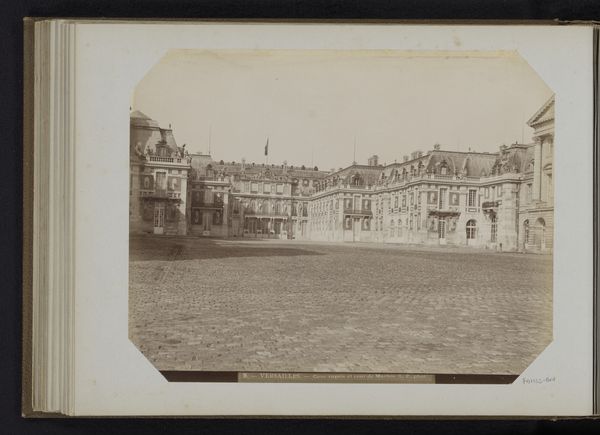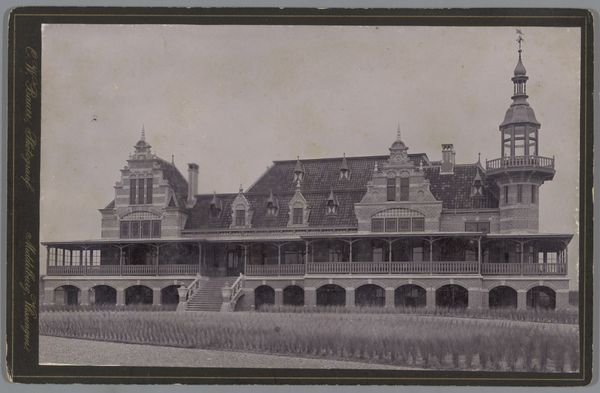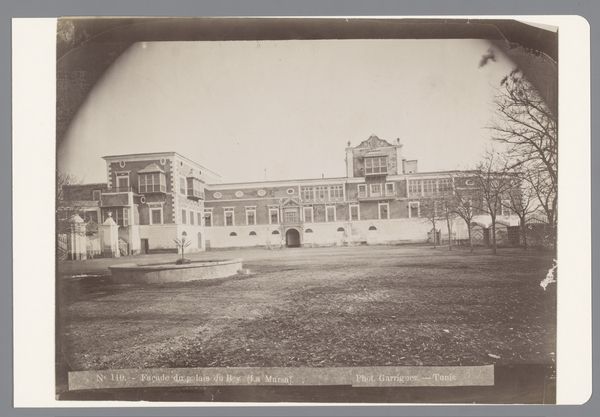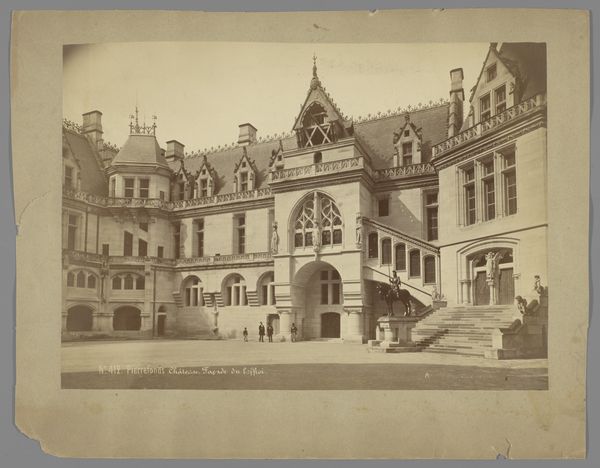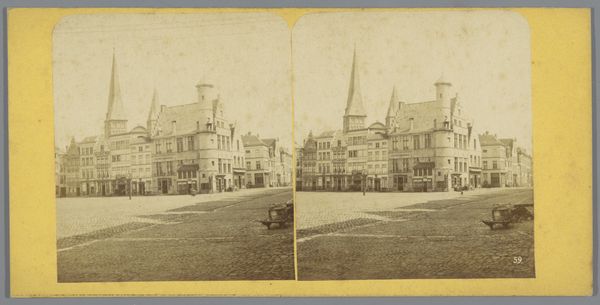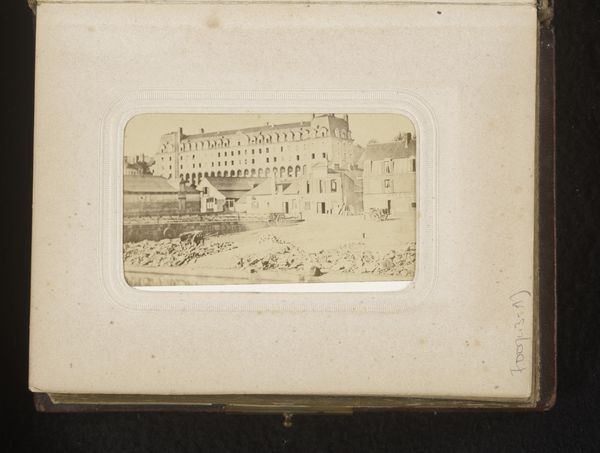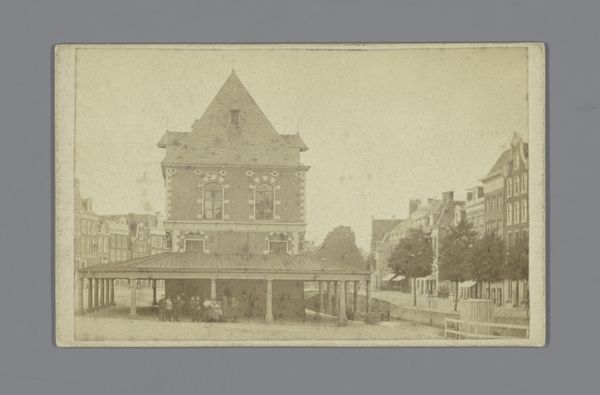
photography
#
pictorialism
#
landscape
#
photography
#
building
Dimensions: height 57 mm, width 91 mm
Copyright: Rijks Museum: Open Domain
Editor: We’re looking at "Exterieur van het Oranje Hotel te Scheveningen," a photograph taken by Carl Philip Wollrabe sometime between 1885 and 1900. There’s this enormous building looming over what looks like a beach…it feels deserted, almost ghostly, despite the activity of people and horse carriages. What pulls you into this image? Curator: Well, isn't it amazing how a picture, frozen in time, can whisper stories of what used to be? I’m immediately drawn to the Oranje Hotel itself. Imagine the lives playing out behind those windows – guests arriving with trunks, grand balls, maybe even whispered secrets… The pictorialist style gives the scene a dreamy quality, doesn't it? Like a memory half-remembered. It softens the starkness you mentioned, bringing an almost romantic aura. Do you feel that too? Editor: I do, actually. That slight blur almost makes it feel less like a building and more like a stage set. I'm also struck by how the composition directs your eye – the sharp horizon, then those bold stairs... it leads right to the grand entrance! Curator: Precisely! Wollrabe has clearly thought about our gaze, hasn't he? But what really intrigues me is the light. Notice how it seems to skim across the scene, highlighting certain areas, while leaving others in shadow? To me, that invites reflection about public and private spheres. Almost like this photograph asks "What would it feel like to stand on the precipice, as the figures and horses seem to be, of an adventure about to be born?" Editor: I see what you mean. This picture holds much more than just a building. I didn't quite pick up on all the layers, and that dreamy effect, before talking with you. Curator: That's the magic, isn't it? To see with new eyes, to find a thread that connects the past to the present. And sometimes, to realize a beautiful piece also represents how very temporary it is. It's food for the soul, really.
Comments
No comments
Be the first to comment and join the conversation on the ultimate creative platform.
